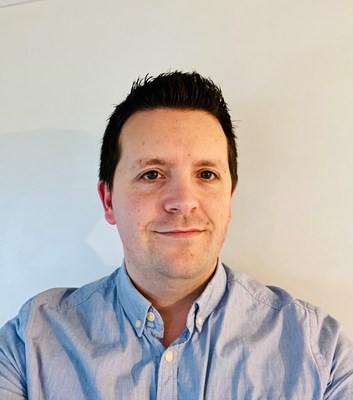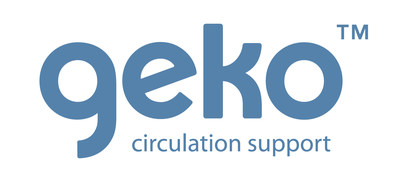TMCnet News
Matt Watts talks through the collaborative R&D process behind the innovative geko™ deviceHIGH WYCOMBE, England, March 4, 2021 /PRNewswire/ -- The Medical Technology (MedTech) industry has rapidly developed in the last decade, offering new and innovative ways to address some fundamental medical challenges. Matt Watts is head of Product Research & Development at Sky Medical Technology, a British MedTech company that has created the first NICE-approved, bioelectronic muscle pump activator of its kind indicated for use in the US for VTE prevention across all patients, including non-surgical patients, alongside clearances for blood flow increase and oedema reduction. In this article, Matt outlines the collaborative processes that turned a patented technology into a medically proven product, and how this process was driven by close collaboration between the R&D, regulatory, manufacturing and commercial functions - informed by valuable feedback from those who would be prescribing and using the device: patients and clinicians. The age of MedTech The global Covid-19 pandemic may have accelerated the need to manage limited healthcare resources effectively, but this is not new. The growing number of people living longer continues to place increased pressure on healthcare systems globally. Addressing this issue increasingly relies on innovation. The medical devices market is predicted to be worth more than $6 billion in 2020, growing rapidly to $8.5 billion by 2025 – with bioelectronic medicine being one of the fastest growing areas. In 2019 alone, almost 14,000 patent applications were filed with the European Patent Office (EPO) in the field of medical technology. A 2018 report from the Deloitte Centre for Health Solutions neatly encapsulated the challenges facing the industry. The report conducted research with 22 MedTech companies to understand how research and development leaders were responding to pressure to improve efficiencies and reduce costs. The companies interviewed identified three key priorities to help address these issues: more diverse product portfolios, a faster time to market, and leveraging real-world evidence in product development. Building a case for medical adoption These three priorities resonated closely with our own experience at Sky Medical Technology. Our journey began with a technology called OnPulse™. For millions of years mankind has maintained its wellbeing by walking. As well as acting as an excellent form of exercise, walking causes blood to be evacuated from deep veins. When blood remains in the deep veins, it can increase the risk of life-threatening blood clots. When people are unable to move, the risk of suffering the negative impact of blood clots increases. This is often a complication or risk for patients who are immobile after major surgery. It is also one of the reasons why clinicians want post-operative patients up and about as soon as possible. The OnPulse™ technology aimed to deploy electrical pulses to stimulate the common peroneal nerve and activate the calf and foot muscle pumps, resulting in muscle contraction in the lower leg. This has around 60 percent of the impact on blood flow increase in the deep veins as walking but does so without raising someone's pulse or blood pressure. We believed that this technology had the potential to reduce patient risk of serious illness from blood clots in the aftermath of an operation or an extended stay in hospital. However, to do so, it needed to become a medical device that could pass regulatory approval and ultimately be recommended by clinicians to patients as a viable alternative for patients unable to be treated by or to tolerate intermittent pneumatic compression devices (IPC) – a cumbersome, full or half leg plastic sleeve that repeatedly inflates and deflates to move blood through the veins. The journey from technology to device Taking OnPulse™ technology from patent to a functioning medical device was no simple process. Critical to success was a close collaboration between the R&D, manufacturing, clinical and regulatory functions and the commercial team. Collectively we were charged with creating a process by which a reliabe and effective electronic device, incorporating OnPulse™ technology, could be designed, iterated, manufactured, and receive regulatory approval. Combining a collaborative process with a sharp focus on the needs and requirements of the end user, enabled us to be agile in bringing the product to market, minimising risks and cost. The result has been the geko™, a wristwatch-sized wearable device which is applied to a patient's knee and delivers painless electrical impulses to stimulate blood flow, without the patient having to move. The increased blood flow helps to address a range of circulatory disorders, from life threatening blood clots, complications related to swelling after orthopaedic surgery and wound healing (leg ulcers). Key considerations on the journey Central to bringing the geko™ device to market was balancing the needs and requirements of different groups into a product that delivers for multiple audiences. For example, clinicians know where nerves are located and understand how to find them. The same audience, however, is extremely time poor; they want a device that is as quick to administer as possible. Patients, on the other hand, have more time but less knowledge. Balancing these different needs required both a full, multi-language instruction sheet to help a patient correctly position the device for maximum effect, supplemented with posters and digital materials for clinicians to make application quicker. A further important consideration was ensuring that the geko™ device was comfortable for the patient to wear. We knew the OnPulse™ technology was clinically proven to stimulate blood flow in the leg in laboratory conditions. However, every person is different, with varying levels of tolerance: too little stimulation would not provide enough impact to shift the required blood; too much could prove uncomfortable. By incorporating an easy push button mechanism to increase and decrease the electrical pulse, we could help patients and clinicians find the optimum stimulation. This is reached when there is a visible movement in the calf muscles and an outwards movement of the foot after each pulse - all patients report they forget they are wearing the geko™ device after just a few moments of wear. Manufacturing flexibility Any individual manufacturing issue, if not identified in a timely manner, could cause delays and additional cost. We are able to minimise this through an open communication channel with all parties: weekly meetings between the heads of R&D, regulatory and manufacturing ensure that any issue is addressed quickly, and that changes are incorporated early. In the pursuit of operational efficiencies, we chose to outsource manufacturing and product assembly to partners able to accommodate agile product and process change and, most importantly, with an ability to manufacture small batch prototypes so that changes could be tested and incorporated quickly and effectively. In addition, partners needed to deliver a consistent and exceptionally high-level of reliability when manufacturing a final approved component or within an assembly process. Gaining regulatory approval Navigating the complex regulatory landscape can prove far from easy, not least because there are different requirements and expectations in various geographic markets. Medical device approvals routinely require the implementation of a quality management system certifications, audits and factory inspections consistent with most international regulations and standards, placing pressure on our R&D and manufacturing function to rigorously test rolling product changes at all stage of the production process. The impact of US FDA clearance is significant: many market regulators follow the FDA's lead when it comes to approvals, and if a product already has FDA clearance, the approvals process for other territories can be much quicker. It also increases the market opportunities and potential revenue streams. The biggest hurdle to securing approvals is the generation of clinical evidence to demonstrate beyond doubt the value of an innovation. Real-world data and Randomised Control Trials (RCTs) provide the best chance of success and minimise potential regulatory costs and time delays. Sky Medical Technology has gained nine FDA clearances for the geko™ device to date. One technology, multiple applications One of the key priorities in the Deloitte report was building a diverse portfolio of products. The geko™ device mechanism of action is applicable to multiple medical applications. Focus applications currently include the prevention of venous thrombosis (VTEs); the prevention and treatment of oedema (swelling); and wound therapy applications (hard-to-heal leg ulcers). The total potential market opportunity for the geko™ device in each of these areas is £202 million, £282 million, and £603 million in 2020 respectively. The geko™ device variant for VTE prevention and oedema management provides a daily wear time of up to 24 hours. Whereas, Sky's wound therapy device, which utilises the same mechanism of action, is a variant that required R&D to configure the device software to provide two separate 12 hour doses, over a 2 day period. Product Traceability One important R&D development has been spearheading the addition of traceability within the geko™ device, giving Sky Medical Technology the ability to pull up an internal log indicating how each device has been used. This has proven extremely useful for measuring product performance during clinical trials and for the routine investigation of any product issues. We have also built an internal serial number into each device's memory, enabling us to trace the entire manufacturing cycle. A virtuous circle of innovation As adoption across different medical applications grows, so does the insight in both how the device can be most effectively deployed, and the tangible difference deployment makes. Each deployment of the geko™ device in UK, take for instance VTE prevention in acute stroke patients, is estimated to save the NHS £334 per patient, amounting to an annual saving to the health service of £7.6 million via this application alone. All of Sky Medical Technology's focus value propositions are supported with clinical and health economic data. The future Sky Medical Technology R&D will continue to deploy a collaborative approach across different business disciplines to deliver MedTech innovation that drives better patient outcomes. We are already collaborating on future versions of the geko™ device, based on feedback from users and clinicians. As evidence of successful outcomes and financial savings are realised, investment in the geko™ device and OnPulse™ Technology can be focussed on new opportunities. Delivering a successful medical technology device to market requires a comprehensive understanding of how healthcare systems operate globally, persistence and patience. Key to turning promising technology into successful medical devices is a continuous journey of collaboration, where different disciplines proactively work together to address risks and issues. By doing so we can ensure that risk and cost is minimised, helping to bring superior, life changing new medical innovations to market in a cost effective and efficient way. As products become less objects of value and more the means for remotely accessing information and experiences, future iterations of the geko™ will continue to evolve in this direction.
SOURCE Sky Medical Technology Ltd. 
|




